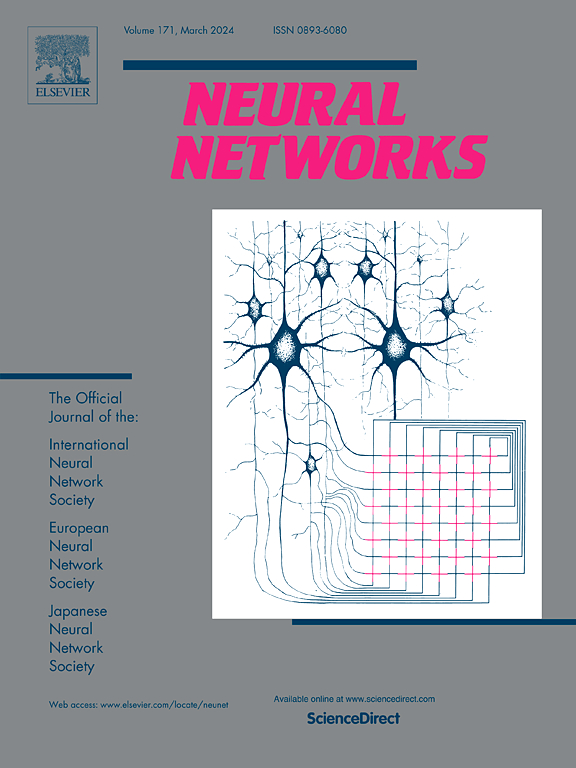MOAL:多视图分布外意识学习
IF 6
1区 计算机科学
Q1 COMPUTER SCIENCE, ARTIFICIAL INTELLIGENCE
引用次数: 0
摘要
多视图学习集成了来自多个数据源的数据,通过提高数据质量来提高任务性能。然而,现有的方法主要集中在分布内数据学习,因此不能有效地识别分布外实例。本文介绍了一种改进多视图情况下对非分布数据感知的方法。首先,利用多视图一致性和互补性原则构建子视图互补表示学习和多视图一致性融合层,增强模型对典型分布内特征的感知能力;此外,我们引入了专门的多视图训练损失和针对非分布场景定制的代理机制,促进了有效区分已知和新的或异常实例的能力。该方法通过改进分布内特征表示和最小化与分布外实例相关的熵来增强对分布外数据的识别。在多个多视图数据集上模拟非分布场景的实验结果证实了MOLA的有效性,其平均精度提高超过5%,始终优于所有基线。本文章由计算机程序翻译,如有差异,请以英文原文为准。
MOAL: Multi-view Out-of-distribution Awareness Learning
Multi-view learning integrates data from multiple sources to enhance task performance by improving data quality. However, existing approaches primarily focus on intra-distribution data learning and consequently fail to identify out-of-distribution instances effectively. This paper introduces a method to improve the perception of out-of-distribution data in multi-view situations. First, we employ multi-view consistency and complementarity principles to develop sub-view complementarity representation learning and multi-view consistency fusion layers, thereby enhancing the model’s perception ability to typical intra-distribution features. Additionally, we introduce a specialized multi-view training loss and an agent mechanism tailored for out-of-distribution scenarios, facilitating the ability to differentiate between known and new or anomalous instances effectively. The proposed approach enhances the recognition of out-of-distribution data by improving intra-distribution feature representations and minimizing the entropy associated with out-of-distribution instances. Experimental results on multiple multi-view datasets simulating out-of-distribution scenarios confirm the effectiveness of MOLA, which consistently outperforms all baselines with average accuracy improvements of over 5%.
求助全文
通过发布文献求助,成功后即可免费获取论文全文。
去求助
来源期刊

Neural Networks
工程技术-计算机:人工智能
CiteScore
13.90
自引率
7.70%
发文量
425
审稿时长
67 days
期刊介绍:
Neural Networks is a platform that aims to foster an international community of scholars and practitioners interested in neural networks, deep learning, and other approaches to artificial intelligence and machine learning. Our journal invites submissions covering various aspects of neural networks research, from computational neuroscience and cognitive modeling to mathematical analyses and engineering applications. By providing a forum for interdisciplinary discussions between biology and technology, we aim to encourage the development of biologically-inspired artificial intelligence.
 求助内容:
求助内容: 应助结果提醒方式:
应助结果提醒方式:


